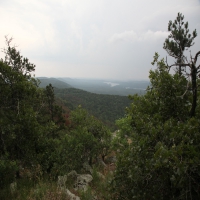I'll pretend you are trying to ask a legitimate qu
Post# of 7805

Quote:
Since you’re (ahem) in the loop, are they going to complete a survey with the Toy on Melbourne or Juno anytime soon?
You claim they won’t spend years (anymore?) but will know in short order if there is treasure on a wreck site or not.
Can you define short order, and/or give some sort of timeline?
This question sure makes it sound like you want to know when treasure will be announced.
But sure, let's play pretend.
You want to know how long it will take, on a general basis, for the SeaSearcher to scan a wreck site and produce data that can determine if a wreck site has treasure? And are we also to assume we can disregard the first use of it at the Ring site where it did it's job but was hampered by Parsons and various setbacks that might occur during a first time usage?
What you are doing here is asking for a timeline so you can use it in the future to say the SeaSearcher has failed because said timeline was not met... said timeline as reported by a non-representative of the company.
For the benefit of actual shareholders, a group of which you do not belong, I will say as much as I understand regarding the process which may or may not be accurate because I am not a scientist working on the project nor do I work for Seafarer. I also understand that whatever I say, you will be making assumptions that do not exist, taking words and phrases out of context and will project red herrings that are of no benefit and go nowhere.
The science behind the SeaSearcher was conceived a few years ago during a meeting with Tim Reynolds and Kennedy. A prototype was assembled that proved the concept worked. This prototype was then improved on repeatedly as different scenarios were experienced in real-world and lab usage.
Eventually things came together in such a way as to provide data on the Ring site that indicated there was no treasure there. The ring site was a learning experience that resulted in an expanded set of metals to be used in data collection.
They have since moved on to, or back to, the Juno site and have scanned it. All I know for sure about Juno is that they are not, for now, moving on from Juno the way they did at Melbourne.
At this point, what is needed for the company is for the SeaSearcher to indicate treasure and then, that SeaSearcher interpretation is backed up by laying hands on, uncovering and announcing the indicated treasure has been found. That is the next step in this process. Or, at least, it seems like it should be.
I guess you could say the next step could be that the SeaSearcher indicates treasure at a site instead of a lack of treasure at a site. But that's just a half step that must be backed up by a discovery of treasure where indicated and confirmation of a specific metal type or types. Till then, it's unproven to the public.
After the SeaSearcher is proven to accurately indicate specific metal types and an estimate of quantity (based on improved sonar scans), a few times even, then, and only then, will SeaSearcher interpretations be of value. And at that point they will be of immense value.
After enough sites have been successfully interpreted, under ideal conditions, I would think scanning and interpretation of data would take only a couple of days and may, at some point, be delivered live and on-site during the scanning process. But this is info Reynolds and his crew are familiar with, not me.
Time will tell. Let's hope it's not much longer. Been too long already.
Meanwhile, I'm still looking for tonnage, not trinkets.
Go SFRX!
 (1)
(1) (0)
(0)